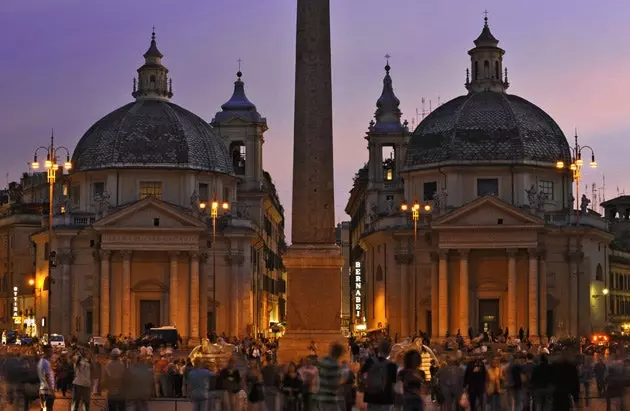
The Flaminio Obelisk in Piazza del Popolo
We have several options: 1) Wait. 2) Sharpen wit and follow in the footsteps of the pharaohs outside the egyptian borders . We are not only talking about museums, but about ancient remains (including looting that is not without controversy, requests for repatriation, etc.) of this civilization that are preserved in some cities in the form of sphinxes, obelisks or even entire temples. Some much closer than you imagine.
MADRID
Of course, we start with Madrid. For a place where most of the people of Madrid have experienced a sunset in good company: the Temple of Debod, between Plaza de España and Paseo de Pintor Rosales. The thing is not for less, the print is enviable: the sky of Madrid (which is not anything) and a Nubian temple of more than 2,000 years which can be reached by Metro. The story is the daughter of a time when the Egyptian authorities won diplomatic friendships at the stroke of ancient gifts. This one in particular was donated by President Gamal Abdel Nasser in the 1960s to thank Spain for the half million dollars that he contributed to save the sanctuaries of the Nubian region threatened by the waters of Lake Nasser after the construction of the Aswan Dam. . Another 50 countries responded to the call of the Egyptians, and these corresponded to the most generous with 'stones', the reason why currently the Taffa Temple It is in the National Museum of Antiquities of Leiden (Netherlands) , that of Ellesiya in the Egyptian Museum of Turin and the one of Dendur at the Metropolitan Museum of Art New York.
To save the cave temple of Abu Simbel, erected by Ramses II in 1284 AD to commemorate his victory at the Battle of Kadesh (ca. 1274 BC), with the construction of the Aswan High Dam in 1964, he had to move stone by stone a few meters. Something similar, but on a smaller scale, and in a much more portable format, is what he has done Egyptian craftsman Hany Mostafa who has built an almost exact replica of the shrine , and which is currently exhibited in Jerez . The reproduction will be present in the city of Cadiz until August 25, and then travel to Granada, France and the United Kingdom.
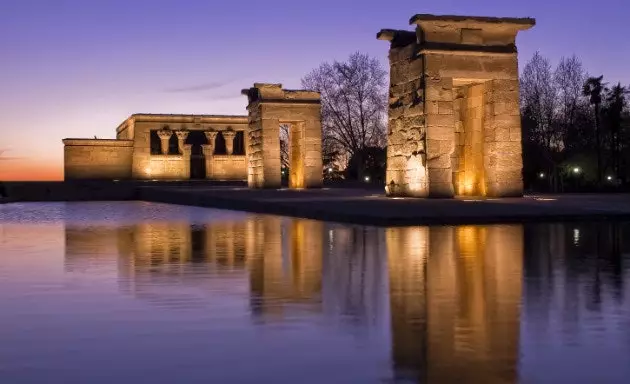
Sunset at the Temple of Debod
If Abu Simbel is an authentic icon of Egyptian civilization, **the Rosetta Stone is, in addition to being the star piece of the British Museum (which is saying a lot)**, the key to understanding Pharaonic culture. The stela, with inscriptions in hieroglyphs, demotic script and ancient Greek, was deciphered by Jean-François Champollion in 1822, but had been on display in the museum for twenty years. The subject of great diplomatic controversy, on numerous occasions the Egyptian authorities have requested his repatriation, but for the time being, the British don't seem to want to give up such candy.
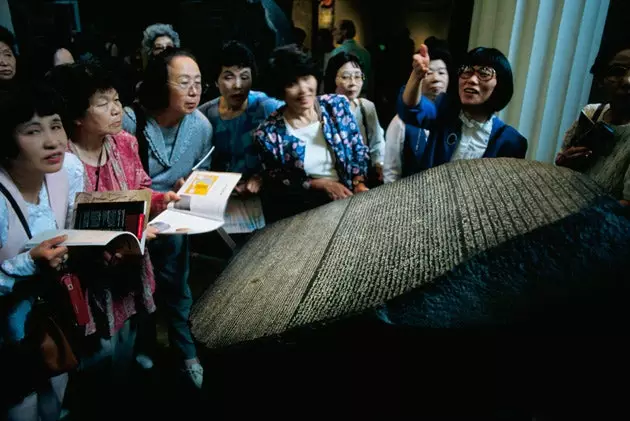
The Rosetta stone, one of the highlights of the British
Outside the museum, which preserves one of the best collections in the world, in London you can see other curious Egyptian pieces. Perhaps the most bizarre is the small black basalt statue of the goddess Sekhmet that presides over the door of Sotheby's (34-35 New Bond Street), and which is the oldest outdoor sculpture in the city. The other, much more monumental, is the obelisk of packing , erected in Aswan granite at Heliopolis by Thutmose III about 1500 BC (according to regza inscription on its east face). On his voyage from Alexandria he had great adventures – shipwreck in the Bay of Biscay included – before being installed here in 1878.
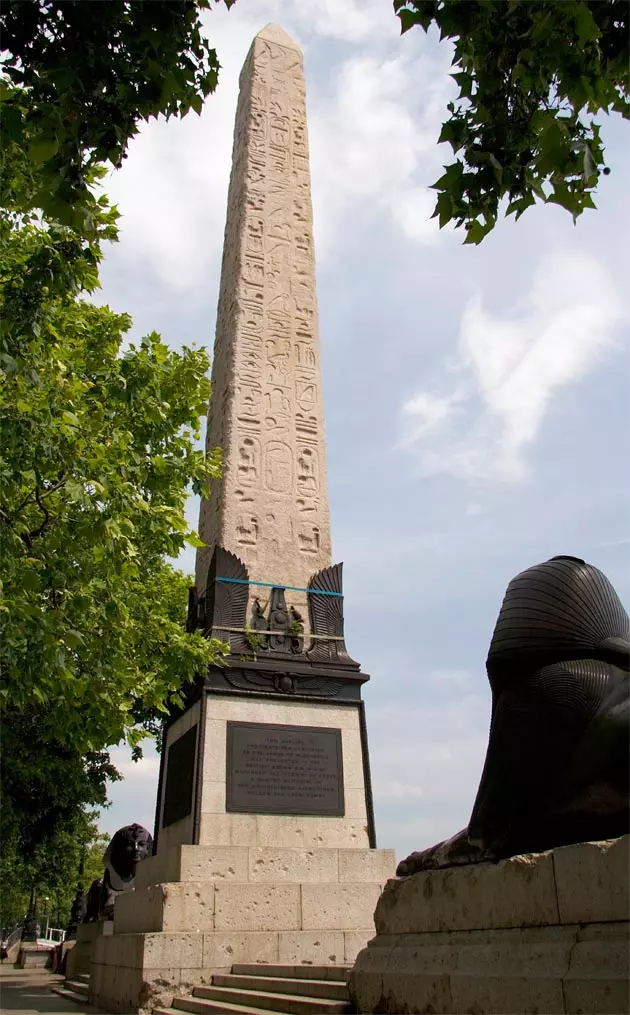
Two sphinxes guard Cleopatra's Needle, the oldest monument in the city
Originally the obelisks were placed in pairs. The Londoner's twin, Cleopatra's other needle, is also out of its original location. Specifically in New York, and for more details in Central Park (at the height of the 73 more or less). It was a gift from Khedive Ismail of Egypt in 1869, in gratitude for America's help in building the Suez Canal.
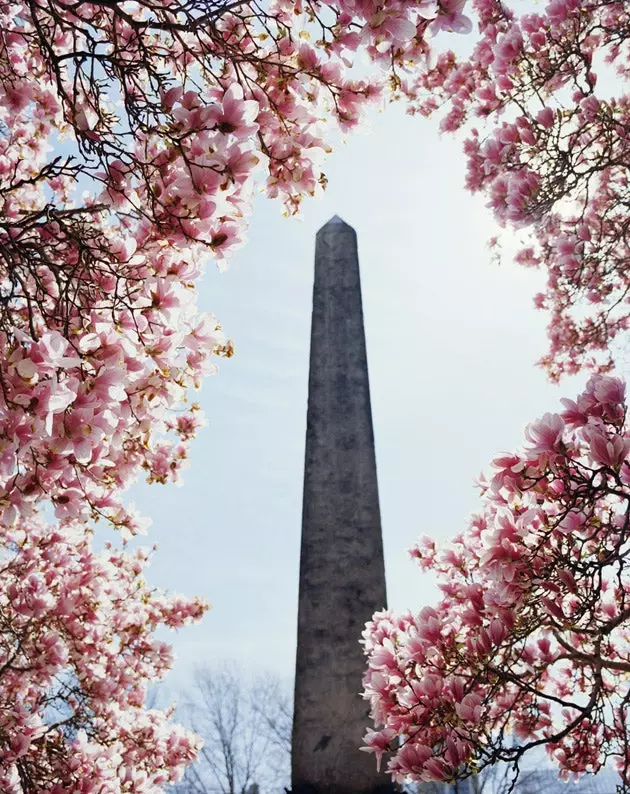
The New York couple of Cleopatra's Needle
They are also separated the two obelisks of the Luxor temple. One (the one on the left facing the temple) can be seen on the spot; the other is in paris , in the best known of all its squares: La Concorde. Mehemet Ali, a Wali of Egypt, under pressure from Jean-François Champollion, gave it to France in the early 1830s. It is the smaller of the two, it is 3,300 years old , weighs more than 200 tons and measures almost 25 meters (not counting the pedestal).
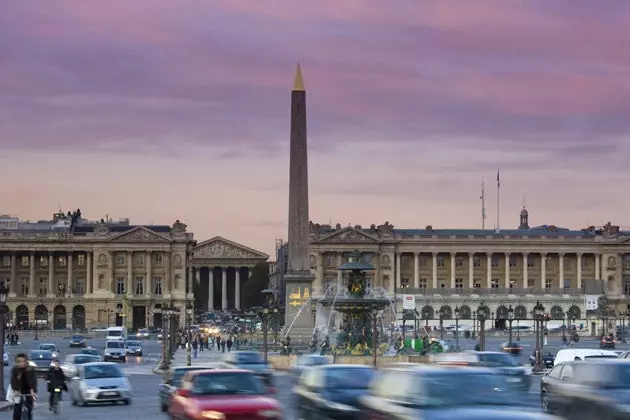
Place de la Concorde, in Paris
Another city that can boast of having not one, but several obelisks, is Rome , where the emperors brought them to boast of their power and their conquests: the Flaminio in Piazza del Popolo , coming from Heliopolis, that of San giovanni in laterano; the Macuteo, in the Piazza della roundabout , Y the one in St. Peter's Square East (of 25 meters, and more than 331 tons). Caligula was brought here in 37 AD, to put it in the center of his circus, and later it was placed in the center of the square devised by Bernini. It is said that when Sixtus V placed it he forbade speaking under punishment of excommunication, but it was a sailor who saved it from a catastrophe by warning that they had to wet the ropes in order to raise it. Obviously, the pontiff forgave him.
The smallest and also the most original of the Roman obelisks is the one in front of the door of the chiesa de Santa Maria sopra minerva, one of the minor basilicas in Rome, very close to the Pantheon. It is placed on a little elephant designed by Bernini , inspired by a novel by Francesco Colonna: Polífilo's dream in the dispute of love. The statue is known as El pulcino della minerva.
You cannot finish this tour of Egypt without entering the Egyptian Museum of the Neues Museum in Berlin , where a magnificent collection is preserved, ranging from ancient Egypt to Roman times. 2012 marked the centenary of its most emblematic piece, the bust of Nefertari (1340 BC), the wife of Akhenaten : famous for its dazzling beauty 50 centimeters of statue that make this museum the most visited in the city.
In Spain you can also see Egyptian pieces in the National Archaeological Museum. Madrid, the Egyptian Museum of Barcelona, the Museu de l'Orient Bíblic de Montserrat. Montserrat (Barcelona), the Víctor Balaguer Library-Museum (Vilanova i la Geltrú), the Biblic Museum of Palma de Mallorca; the Municipal Museum of Archeology of Almuñécar, the Museum of the Culture of Wine. Briones (Logrono).
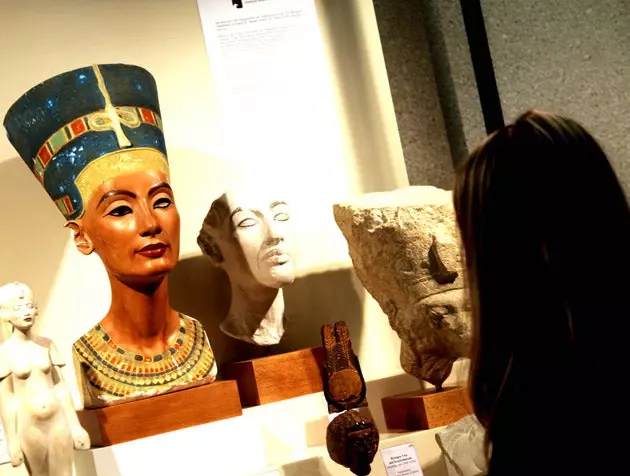
Nefertiti, the Berlin star
